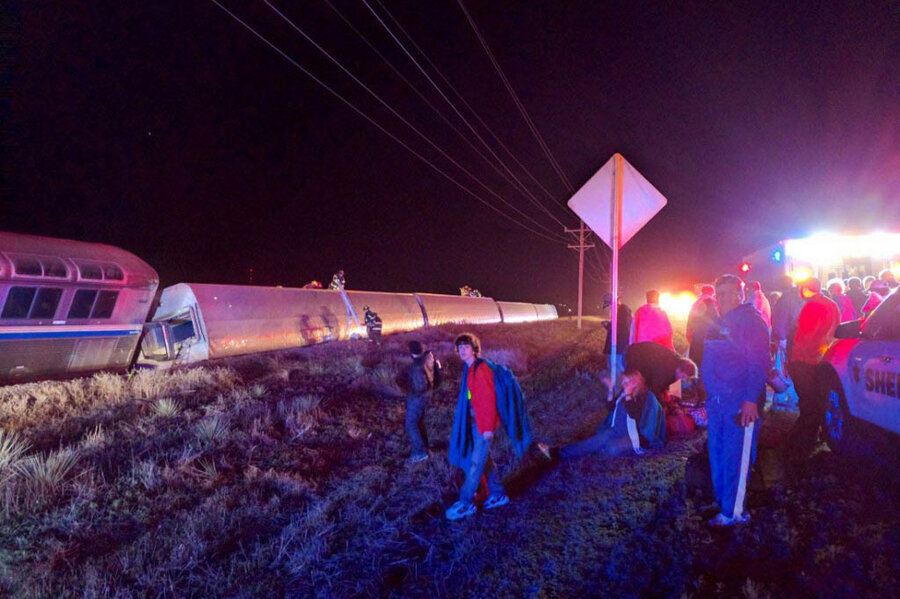Amtrak train 'shaking' before derailment in Kansas. What happened?
Loading...
An Amtrak train traveling from Los Angeles to Chicago derailed just after midnight Monday in southwest Kansas. Of the 131 passengers and 14 crew members, 32 people were treated for injuries at a hospital. Most were released by late morning but two are in critical condition.
An engineer activated the emergency brakes for the passenger train after spotting a significant bend in a rail ahead of the train, a government official told The Associated Press on condition of anonymity because that person was not authorized to speak publicly.
Passengers described the train as shaking before several cars tipped over. Timothy Davidson, a passenger from Nashville, Tenn., told the Associated Press there was "a lot of clacking for about 20 minutes" and it sounded like something had fallen off the train.
The train derailed about 20 miles west of Dodge City, Kan., on its way from Los Angeles to Chicago.
This is not the first passenger train to derail this year. Just last week a commuter train hit a fallen tree and came off its tracks injuring nine in California.
And 2015 saw its fair share of derailments as well, including one in Philadelphia in May that left six people dead and over 140 hospitalized for their injuries.
"Most derailments are relatively benign, and can be compared to a person walking down the street, tripping, getting back up, and continuing on her or his way," University of North Dakota mechanical engineering professor George Bibel wrote in “Train Wreck: The Forensics of Rail Disasters” in 2012.
"Derailments are usually caused by equipment failures," Dr. Bibel wrote. "Broken, settled, spread, shifted, or overturned rails account for about 50 percent of the equipment related derailments."
Human error does play a role sometimes too.
"Poor train handling, incorrectly set track switches, unsecured cars on a hill, shifted loads, vandalism, or obstructions on the track are among the human causes of derailments," Bibel wrote. "Derailments can also be caused by flash floods, avalanches, rock slides, and high winds."
But the derailments lately may be best explained by a breakdown in infrastructure. Amtrak is struggling to stay afloat financially, The Washington Post reported in 2015. And, as Amtrak chief executive Joseph Boardman told the Atlantic in 2014, "The problem that you have — and you’ve had it since 1976 and even before — is that there’s never been an investment program that would bring the infrastructure up where it belongs on existing capacity."
This report contains material from The Associated Press.






